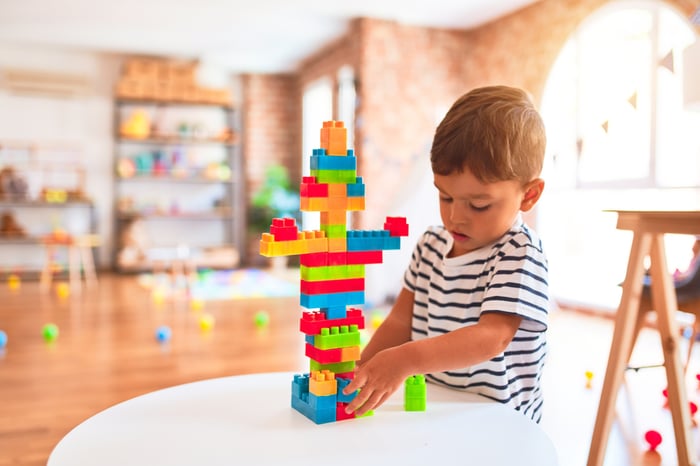
During the early childhood years educators are tasked with building the educational foundation for a child. An important ingredient of a strong foundation is a child’s grit or resilience. How do we help our young learners develop the ability to push through when something is hard?
Growth mindset is an approach that focuses more on effort than outcome. It promotes the idea that with time and practice children will achieve and grow. Creating a growth mindset in your classroom helps children to develop important social-emotional skills required for perseverance and problem-solving. So how do we, as early educators, develop a growth mindset in our classrooms?
1. It is All About Attitude
It is important for educators to model and praise effort over outcome. For example, instead of saying, “I like the way you wrote your name,” try “You worked so hard at writing your name. I like your effort.”
2. Focus on Problem Solving
Don’t be the helicopter teacher that swoops in to fix things when children are struggling. For example, if milk gets spilled at lunch. Instead of saying, “Let’s grab some paper towels and clean this up,” say “How can you fix this?” This approach will afford children the time and opportunity to be solution-orientated when approaching challenges.
3. Child-Directed Instruction
Plan child-directed activities in which children are encouraged to create with little teach instruction and no outcome planned. Child-directed activities are unstructured and child-centered. For an art project, for example, materials are placed in front of your children, and they are then encouraged to use those materials in any way they wish to create their own “work of art”.
4. Encourage Risk-Taking
Encourage children to try things that are new and challenging by praising effort. Many children have a fear of failure and naturally decline to participate in new activities. If a child gives up before they even try, they won’t achieve growth. Encourage fearlessness by praising the effort and not the outcome.
5. Encourage Peers to be the Leaders
Empowering children to help each other builds self-confidence and leadership skills. Children learn by seeing what others do. Praise the leaders and offer opportunities for other children to volunteer their efforts.
6. Support Independence
Allow children to be the master of their environment. Organize and label your classroom so that children independently choose materials.
7. Scaffold Learning
Vygotsky’s Zone of Proximal Developments states that when developing the learning environment for children it is important to scaffold their learning to challenge them, but not make the task so hard that a child becomes frustrated and gives up. Prior to developing lesson plans, observations and assessments are needed to determine the developmental level of each child. Once that is established creating challenging activities to stretch but not frustrate will teach children that they can overcome new challenges.
Social-emotional skills are the foundation of future success of our children. Being intentional in establishing a growth mindset in the classroom that celebrates effort and fosters problem-solving helps children develop to overcome challenges.
Christina Vaan
Christina is a blog writer and early childhood education content specialist at Kindertales.

